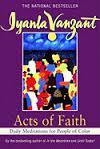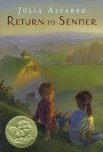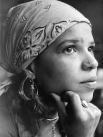Lynn M. Dixon's Blog, page 67
April 8, 2015
Be Content!
Be content with what the cards sent.
Accept your lot. Do not feel bent,
Out of shape. When confusions stay,
Clarity will surface and lay.
While waiting for it to make sense,
Reflect. Forgive and recompense.
All matters will fall into place,
Justice will prevail in your case.
Lynn
April 8, 2015


April 6, 2015
Poets Express!
Poets, poets everywhere,
Write those words; extend with care.
Say it. Spray out those feelings.
Add rhythm to those dealings.
Others have been through the same,
Love, joy, pain all filled with blame.
Heartstrings tremble but can heal,
Buffered by a cozy deal.
Lynn
April 6, 2015


April 5, 2015
Easter Morn
Celebrate and be renewed,
Never feel you’re not imbued.
With Christ’s grace and power,
It fills you up each hour.
You don’t have to stand alone,
Seeds you planted are now sown.
Flourish, blossom and peek out,
Growing, climbing, upward mount!
Lynn
April 5, 2015

April 3, 2015
Charge On!
Sobering thoughts clear the mind,
Of times when others weren’t kind.
Looking back at life’s events,
No, it hasn’t been a cinch.
Pain. Loss. Grief all boilin’ up,
Filled to the top of the cup.
Let it surface. Face it brave,
Clearance, now. Exit the maze.
Look ahead. Step forth with ease,
Clarity now! Feel the breeze.
Gates are up. Can proceed now,
You’ve done quite well. Take that bow!
Lynn
April 3, 2015

April 1, 2015
National Poetry Month
Writing poetry comes fairly easy for me. I first realized that while in college after I was inspired to pen a few poems. Most dealt with the affairs of the heart which normally spark feelings and emotions.
Later, I was asked to write a poem when I was a prom sponsor at one of the high schools. In a short amount of time, I wrote one called “Intimate Essences of Joy.” It was printed on the prom bids and I spoke on behalf of the students. I thought of how they would be feeling as they were about to graduate and move on to the next level.
So, on occasion, if some subject speaks to me and if my muses are in agreement, I will write a poem. Ralph Waldo Emerson writes, “Painting was called silent poetry and poetry speaking painting.” Poets paint images through their use of words, which may or may not rhyme. I attempt to rhyme and lately, I have tried to get an even number of beats and rhythm.
April is National Poetry Month and I have written a select number of poems to salute the month of poetry. Many poets have inspired me along the way and some of my favorites include: Walt Whitman, Emily Dickinson, Langston Hughes, Shel Silverstein, Dr. Seuss, Robert Frost and Maya Angelou.
And then, there are those poets that I have had the opportunity to see and hear as they read their creative pieces. They are: Nikki Giovanni, Quincy Troupe, Sonya Sanchez and Gwendolyn Brooks. Some poets have written eternal pieces that are usually posted somewhere in my home. Those works include, Waiting by John Burroughs; The Road Not Taken by Robert Frost and Desiderata by Max Ehrmann.
This list of beloved poets and poems could go on and on, but I will stop here. Happy National Poetry Month! Enjoy the poems, the verse and words which could be turned into lyrics. Read what we poets are posting after the Muses graciously said, “Yes.”
Lynn April 1, 2015

March 29, 2015
Gwendolyn Brooks
I had the pleasure of seeing Gwendolyn Brooks on more than one occasion at Chicago State University. She was a professor there at the same time that I had a teaching stint. I attended the reception when they opened the Gwendolyn Brooks Center for Black Literature and Creative Writing named in her honor.
Several dignitaries were present and I remember having a brief chat with the illustrious historian, Lerone Bennett. It was a jovial, low-key, yet gala affair as people stood around talking and nibbling on light snacks. Of course, she was there with her ever-present smile.
I also saw Gwendolyn Brooks at a couple of literary conferences which were held annually on the campus. At another event, those of us who were in a modern dance class danced and she read poetry. It was a very memorable day.
Gwendolyn Brooks had a smile that could light up any room and I never saw her look cross or unpleasant. She seemed to give life the light touch and there was this subtle, gracious aura surrounding her each time I was in her presence. Isn’t that a nice thing to be able to say about someone?
Gwendolyn Brooks was awarded a Pulitzer Prize for Poetry in 1950, becoming the first African-American to be granted this honor. She was also became Poet Laureate of Illinois in 1968 and held that title until her death in 2000. And, she was appointed the Poet Laureate Consultant in Poetry to the Library of Congress in 1985.
As a Poet Laureate her role was to ‘promote citizens’ awareness of poetry as well as heighten their appreciation of the art form. The Laureate strives to forge a meaningful communion between poetry and the state’s populace (Illinois Poet Laureate). There is also high school named for her on the south side of Chicago.
Most Chicago school libraries house a copy of her book, Bronzeville Boys and Girls. Most of them are tattered and worn from use and often in need of replacement. I was happy to replace our school library’s copy for a new, fresh and colorful one.
Her poem, We Real Cool, holds the most meaning for me. It can be found in many literary anthologies. Ms. Brooks said that she had seen a group of boys in a pool hall on the corner of 79th and Cottage Grove on Chicago’s south side and was inspired to write this poem. Anyone who knows Chicago, also knows that this is a corner of high activity.
They had skipped school and years ago, it was called playing hooky. Whenever I taught this poem we would snap our fingers like the Beatniks and get into the rhythm of the motion. It is a snazzy poem and though the boys in the poem think that they are clever, the joke is on them. It reads:
We real cool. We
Left school. We
Lurk late. We
Shoot straight. We
Sing sin. We
Thin gin. We
Jazz June. We
Die soon.
Only a poet can say so much in so few words. It speaks volumes! I am so glad that I had the opportunity to hear and see Gwendolyn Brooks in person.
What a perfect way to end my tribute to our Women Writers during Women’s History Month and open the door for the poets of April’s National Poetry Month!
Lynn March 29, 2015

March 27, 2015
Tillie Olsen
I first encountered Tillie Olsen’s writings in a college literary anthology. This is a great format for writers because they are introduced to young thinkers as they go through their college studies. Writers never know which young impressionable minds might be digesting their works. Consequently, Tillie Olsen’s story, I Stand Here Ironing presented a writing technique that I have not forgotten.
She creatively shows a mother ironing clothes and reflecting on her concerns about her first-born daughter. She is concerned about her daughter’s welfare as she takes responsibility for her daughter’s disconnect.
I found this format unique because Tillie Olsen took something that we all do everyday and simply recorded it. We all clean and do daily chores while our minds rehash events and portions of our lives. The title itself is a great attention-getter.
The story takes place during the Great Depression. The timing alone sets the tone for feelings of despair as many people were feeling during that time. Good writers know certain eras are characters in themselves. The mother irons as she tells the story of her daughter Emily who is now 19 years of age. She was a beautiful, bouncy dark-haired child and the mother raised her by the books.
But to the family’s dismay, the father felt that he could no longer cope and he abandoned the family. The mother is forced to take on extra work to make ends meet and Emily is left with babysitters and sometimes with the father’s family. It is every mother’s greatest guilt.
The mother admits that Emily looks like the father and she privately wonders if she has shown her ample affection. Emily becomes ill and frail and is not gaining weight and she is sent to a sanatorium. Her mother writes her regularly but Emily is not allowed to keep her mother’s letters. They can only be read once and then they are taken to be destroyed which adds to the child’s insecurity.
When Emily does return home, the mother fears that she is forever scarred. The mother remarries and more babies are born. In fact, there are four more children and when the stepfather goes away to war, Emily becomes a second mother to her siblings.
Unfortunately, Emily and her younger sister, Susan, have this ongoing conflict and only a mother’s love can fully understand this rivalry. Susan is a curly- haired blond who is bubbly and very much-loved. She is a stark contrast to Emily when she was a small child.
Yet, towards the end of the story, Emily comes into her own and the mother is pleasantly surprised to see how animated her daughter becomes while acting in a school play. She receives thunderous applause and she wins the approval and adulation of her peers. As the mother continually irons, she laments,” Help her to know that she is more than this dress.”
I replicated this technique in a short story that I wrote called How? It can be found in a collection called Traveling Streams. I would like to thank and honor Ms.Tillie Olsen during Women’s History Month! Her creative writing technique has inspired many and this short story has been made into a short film!
Lynn March 27, 2015

March 26, 2015
Iyanla Vanzant
Iyanla Vanzant spoke at my church years ago. I was at a crossroads and wasn’t sure of my direction, but after hearing her speak, I knew exactly how to move forward. I purchased a ticket for a long desired trip and during that flight, I was able to put a lot of things into perspective. Her books have had that same effect on me.
Ms. Vanzant teaches contentment and patience. In her books The Value in the Valley and In the Meantime, she reminds us that we are always garnering the fruits of our labors. She advises us to remain industrious even during the downtimes. She says that we should stay busy and productive using the gifts that we do have as we wait for our big breaks to come along.
Vanzant tells us to use some of our latent skills, if our major ones are not in demand at that time. We multi-faceted people and we have a lot to give in so many other areas. I have learned so much from reading her works and her messages were not lost on me.
She writes that we should get quiet, really listen and see what we are to learn from what we call challenges. Challenges are really flip-sided blessings. We may have to brush off some skill that we have not used in a while to make ends meet. And, in turn, we may find that we have discovered a new oyster to add to our collections.
My absolute favorite book by Vanzant is Acts of Faith. It is one of the most spiritual books that I have in my collection. She said that she was amazed by it as well. I recently gave it to a co-worker who looks at Vanzant on television. I wanted her to have some of Iyanla Vanzant’s printed words to study and ponder.
Acts of Faith is a daily guide which starts off with a quote by a famous person. Then, Vanzant gives her lesson on that theme. It goes through all 360 days of the year, but any page that it opens to will be the right page. There are no disappointing messages in this little gem.
Each day closes with an affirmation on the subject for the day. It’s the type of book that you buy over and over, because you are likely to meet someone who needs it more than you. So, you gift it and buy a replacement copy.
Congratulations to this inspirational and gifted sage during Women’s History Month. Thank you Ms. Iyanla Vanzant for taking me even further on my journey!
Lynn March 26, 2015

March 23, 2015
Julia Alvarez
When I was a Battle of the Books coach, I had to read Julia Alvarez’s book called Return to Sender. She calls herself a Dominican Republic writer, though she was born in New York City. Her native Dominican Republican parents took the family back to the DR when she was a small child and she spent the first ten years of her life there. So, she has the benefit of writing about both places.
In her book, Return to Sender, a Mexican family moves onto a dairy farm in Vermont. They are migrant workers and have been hired to assist the Vermont family after the father has had a tractor accident.
The story is partially told through the eyes of Tyler who is in the sixth–grade. His family owns the farm. The migrant family, the Cruzes, include the father, his three girls and two uncles. The mother is noticeably absent from this family.
The oldest daughter, Mari and Tyler become friends. They are in the same classroom and they spend time looking at the stars at night through Tyler’s new telescope. Both Tyler and Mari simultaneously narrate the story. Mari’s portion is done through letters to her absent mother.
The reader discovers that a coyote, a person who assists Mexicans get across the border, has kidnapped their mother. They want a ransom from the family and the Cruz family goes into crisis mode as they try to raise the money to free Mari’s mother.
Eventually Tyler loans his savings to Mr. Cruz and travels with the family to the Carolinas to get the abused mother. Shortly after they bring her back, the farm is raided by immigrant officials and the parents are taken into custody. The operation was called ‘Return to Sender.’
This book had me on the edge of my seat. I was unaware of how much fear these undocumented workers deal with on a daily basis. It was educational for Tyler, for me and my students. The Cruz family came out okay later but this story was an eye-opener.
Hats off to Ms. Julia Alvarez for writing such a riveting story!
Lynn March 23, 2015

March 21, 2015
Ntozake Shange
Ntozake Shange is widely known for her dramatic piece called, For Colored Girls Who Have Considered Suicide When the Rainbow is Enuf. Whew! What a mouth full. I saw it staged in Atlanta and I recently saw the movie version on television.
But to me, her greater work is Sassafrass, Cypress and Indigo. This is one of my all-time favorite novels. It has an eclectic flavor where she uses text, poems, recipes, letters and chants as she tells this story about three sisters who are weavers of cloth in Charleston, South Carolina.
I was raised in a family of all girls so I really identified with this book. The mother, Mama, is the central force as she guides and steers her girls in the right direction. She is a widow, but the father’s strong influence can still be felt in the home. There is a down-home feel to this book as we see a lot of cloth strewn around and smell good aromas coming from the kitchen.
Sassafras is the oldest; Cypress is in the middle and Indigo is the youngest. Each sister has a different personality and we get to know them as their stories and experiences unfold. The oldest sister, Sassafras leaves home and travels west. She gets involved with Mitch, who is abusive and can’t deal with hearing any parts of the truth. The mother continually guides her through letters and she hopes that Sassafras will leave the situation.
Cypress is a dancer who leaves Charleston and goes to New York to join a dance troupe. She parties all of the time, likes to cook and seems to go through relationships like water. The mother feels that Cypress is making poor choices and wonders if she will turn out well.
Indigo still lives with the mother and knows the concerns that the mother has for her sisters and their lifestyles. She still talks to her dolls but she listens to the teachings of the older members in the community who help her see life from a different point of view. Indigo remains more grounded in her choices and her attentive aunt also teaches her a lot about life. Aunt Haydee, a healer and a midwife, graciously prepares Indigo for some roles that will greatly benefit her later in life.
This is a beautiful story. I re-read it recently and that is rare for me. Ntozake Shange’s technique of using a variety of art forms influenced my decision to do the same in my novels. I also mixed text with poetry. I would say pick this one up. You will laugh. You will cry. You will sigh. And, you will probably write down quite a few recipes along the way.
I have high regards for this wonderful writer, poet and playwright. Kudos to Ms. Ntozake Shange during Women’s History Month!
Lynn March 21, 2015













